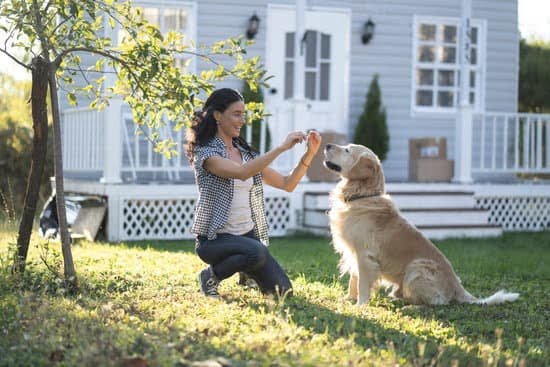Dog training methods play a crucial role in establishing a positive and harmonious relationship between dogs and their owners. Proper training not only improves a dog’s behavior and obedience but also contributes to their overall well-being.
In this article, we will delve into various dog training methods, exploring traditional techniques, positive reinforcement training, clicker training, science-based approaches, relationship-based methods, fear-free techniques, and balanced training. By understanding these methods, you can find the right approach for your furry companion to create a successful and fulfilling training journey.
Having a well-trained dog is essential for both the dog’s quality of life and the owner’s peace of mind. Through proper training, dogs learn important commands, social skills, and appropriate behaviors that make them enjoyable companions. The benefits of training extend beyond basic obedience; it promotes good behavior in various environments, enhances communication between dog and owner, reduces stress and anxiety for both parties, and helps establish clear boundaries.
Traditional or conventional dog training methods are often leash-based and involve physical corrections or dominance-based techniques. While these approaches may have been predominant in the past, they come with their pros and cons. The effectiveness of these methods heavily relies on individual dog temperament and personality traits. However, there has been a paradigm shift towards more positive reinforcement methods that focus on rewards rather than punishment.
Positive reinforcement training involves rewarding desired behaviors with treats, toys, or praise to encourage the repetition of those behaviors. This method creates a strong bond between dogs and owners as it emphasizes trust-building rather than asserting dominance or control over the dog. By utilizing positive reinforcement techniques effectively, owners can shape their dogs’ behavior gradually while promoting an environment of love and respect.
Traditional/Conventional Dog Training Methods
When it comes to training dogs, there are various approaches that have been used over the years. Traditional or conventional dog training methods are one such approach that has been practiced for a long time. These methods typically involve leash-based training, physical corrections, and dominance-based techniques.
Leash-based training is a common method where a leash and collar are used to control the dog’s movements and behavior. This technique focuses on teaching dogs to follow commands and walk properly on a leash.
Physical corrections involve using force or discomfort to correct unwanted behaviors, such as jerking the leash or applying slight pressure on certain body parts to enforce compliance. Dominance-based methods, on the other hand, emphasize establishing dominance over the dog through techniques like alpha rolls and staring contests.
While traditional dog training methods have been widely practiced in the past, there are both pros and cons associated with them. One advantage is that these methods can be effective for certain dogs with certain temperaments. However, they can also have drawbacks.
Some dogs may become fearful or anxious due to the use of physical force or corrections, leading to potential behavioral issues in the future. Additionally, these methods may not be suitable for all dogs, as individual personalities and temperaments vary greatly among different breeds.
| Pros | Cons |
|---|---|
| – Can be effective for certain dogs with specific temperaments | – Can lead to fear or anxiety in some dogs |
| – Provides structure and guidance | – May not be suitable for all dogs |
| – Allows for direct control and correction of unwanted behaviors | – Potential risk of physical harm or injury to the dog |
Positive Reinforcement Training
Positive reinforcement training is a widely popular and effective approach to dog training that focuses on rewarding desired behaviors rather than punishing undesirable ones. This method utilizes rewards such as treats, toys, and praise to encourage dogs to display the behaviors their owners want them to learn and repeat.
The core principle of positive reinforcement training is that dogs are more likely to repeat behaviors that have been followed by a positive consequence. By consistently rewarding desired actions, owners can reinforce good behavior and teach their dogs new tricks or commands. For example, if a dog sits when instructed, the owner might reward them with a treat or verbal praise as a way of reinforcing that sitting behavior.
One of the key benefits of positive reinforcement training is its ability to create strong bonds between dogs and their owners. Dogs learn that cooperation and obedience lead to positive outcomes, which strengthens their trust in humans. Furthermore, this method allows owners to provide clear communication with their dogs and establishes a positive learning environment for pets.
When implementing positive reinforcement training, consistency is crucial. Owners should reward their dogs immediately after they perform the desired behavior so that they associate the action with the consequence. It’s also essential to use high-value rewards at first, gradually transitioning to intermittent reinforcements as the behavior becomes more consistent.
Overall, positive reinforcement training offers numerous advantages in establishing a harmonious relationship between dogs and their owners. It helps improve behavior, increase obedience, stimulate mental engagement for dogs, and boost overall well-being for both parties involved.
| Advantages | Disadvantages |
|---|---|
| – Strengthens bond between dogs and owners | – Requires consistency in reward delivery |
| – Stimulates mental engagement for dogs | – Immediate rewards may not always be possible |
| – Increases obedience to desired behaviors | – Dogs may become dependent on treats for performing tasks |
| – Promotes overall well-being for both dogs and owners | – May not address severe behavior issues in some cases |
Clicker Training
Clicker training is a form of positive reinforcement technique that has gained popularity among dog owners and trainers in recent years. This method utilizes a small handheld device called a clicker as a marker to communicate to the dog when they have performed a desired behavior correctly. By associating the sound of the clicker with rewards, dogs quickly learn to understand which behaviors are being reinforced.
The Fundamentals of Clicker Training
In clicker training, the click is immediately followed by a reward such as treats, praise, or play. The click serves as a precise and consistent signal to let the dog know exactly what behavior they did correctly. It allows for instant communication between the owner and the dog during training sessions.
One key advantage of clicker training is its ability to capture and shape complex behaviors gradually. With each correct behavior that is clicked and rewarded, dogs learn that certain actions lead to positive outcomes. They begin offering those actions more frequently in hopes of earning rewards, which enables trainers to shape new behaviors step-by-step.
The Benefits of Clicker Training
Clicker training offers several benefits for both dogs and their owners. Firstly, it enhances communication between them by providing clear feedback on desired behaviors. The precise timing of the click ensures that dogs understand exactly which actions resulted in rewards.
Secondly, clicker training allows for increased precision in cueing and marking desired behaviors. Dogs can quickly associate specific commands or cues with past experiences of success due to the strength of the association between the sound of the click and food reinforcement.
Lastly, because this method relies on positive reinforcement rather than punishment or correction-based techniques, it creates an overall positive learning experience for dogs. They actively participate in their own training process, making it enjoyable and mentally stimulating for them. As a result, dogs become more engaged and motivated to learn new things.
Science-Based Training
In recent years, there has been a shift towards utilizing scientific knowledge and research in developing dog training methods. This approach, known as science-based training, emphasizes the understanding of dog behavior, body language, and the impact of positive reinforcement in achieving effective training results. By incorporating principles from the field of behavioral science, trainers are able to gain valuable insights into how dogs learn and respond to different stimuli.
The Role of Positive Reinforcement
A key aspect of science-based training is the use of positive reinforcement. This involves rewarding desired behaviors with treats, toys, or praise. The underlying principle is that dogs are more likely to repeat behaviors that have been rewarded in the past. By focusing on reinforcing good behavior rather than punishing unwanted behavior, trainers can create a positive and motivating learning environment for dogs.
The use of positive reinforcement not only encourages dogs to display desired behaviors consistently but also helps strengthen the bond between dogs and their owners. Dogs quickly learn to associate their actions with pleasant outcomes and are more likely to engage in these behaviors willingly.
The Importance of Understanding Canine Behavior
To effectively apply science-based training methods, it is crucial for trainers to have a solid understanding of canine behavior. This includes recognizing various body language signals indicating stress or anxiety, understanding how dogs communicate and interact with each other, and identifying triggers that may cause unwanted behaviors.
Behavioral science provides valuable insights into these areas, enabling trainers to tailor their approach based on an individual dog’s needs and motivations. By being aware of what motivates a particular dog – whether it be food rewards, playtime, or social interaction – trainers can effectively shape desirable behaviors and address any challenges that may arise during the training process.
Applying Behavioral Science Principles in Training
Science-based training emphasizes the use of objective observation alongside positive reinforcement techniques. Trainers utilize methods such as clicker training, which involves using a handheld device that emits a distinct clicking sound to mark desired behaviors. This clear marker helps dogs understand which actions are being rewarded and allows for precise timing in their training.
By utilizing the principles of behavioral science, trainers can effectively shape complex behaviors gradually. They break down tasks into smaller, manageable steps and reinforce each successive approximation toward the desired behavior. This approach allows dogs to build confidence and master new skills at their own pace, leading to more successful and enjoyable training experiences.
In summary, science-based training utilizes behavioral science principles to promote effective dog training. By understanding canine behavior and applying positive reinforcement techniques, trainers can create an environment that encourages desired behaviors while strengthening the bond between dogs and their owners. The use of markers like clickers enhances communication and precision in training sessions. With science-based training methods, dog owners have a valuable toolset to support their pets’ learning journey.
Relationship-Based Training
In recent years, there has been a shift in the way dog owners approach training their furry companions. Relationship-based training has gained popularity and recognition as an effective method that focuses on understanding dogs as unique individuals with their own needs, motivations, and learning styles. This approach acknowledges that every dog is different and requires tailored training methods to foster a deep bond based on trust, mutual understanding, and respect.
Relationship-based training emphasizes the importance of building a strong connection between dogs and their owners. It involves taking the time to observe and understand a dog’s body language, behavior patterns, and temperament. By recognizing these individual traits, trainers can better adapt their approach to suit the specific needs of each dog.
One key aspect of relationship-based training is the emphasis on positive reinforcement. Rather than relying solely on corrections or punishments, this method encourages the use of rewards such as treats, toys, or verbal praise to reinforce desired behaviors. By using positive reinforcement techniques, dogs are motivated to willingly repeat these behaviors in order to receive their rewards.
Another crucial component of relationship-based training is tailoring methods to suit individual dogs. Every dog has its own set of preferences, fears, and motivators. A skilled trainer will take these factors into consideration when designing a personal training plan for each dog. For example, some dogs may be more motivated by food rewards while others respond better to play or physical affection.
Overall, relationship-based training recognizes dogs as sentient beings with emotions, preferences, and individual differences. By approaching training from this perspective, owners can create an environment where their dogs feel understood and respected. This leads to better communication between dogs and humans and ultimately promotes a stronger bond between them.
It’s important for dog owners to consider relationship-based training as an option when choosing their preferred method of dog training. By understanding our canine companions as individuals with unique needs and personalities we can build stronger relationships based on trust and mutual understanding. So, if you’re looking for a training method that fosters a deep bond with your dog while still effectively teaching desired behaviors, relationship-based training may be the perfect fit for you.
Fear-Free Training
Fear-free training methods have gained significant recognition and importance in recent years for their ability to promote emotional well-being in dogs. This approach focuses on creating a positive and comfortable training environment that prioritizes the emotional needs of the dog. By reducing stress and anxiety, fear-free techniques aim to establish a relationship built on trust and mutual understanding, resulting in more effective training outcomes.
One key aspect of fear-free training is the emphasis on positive reinforcement. Instead of relying on physical corrections or dominance-based methods, fear-free trainers use rewards such as treats, toys, and praise to encourage desired behaviors. This technique not only motivates dogs to display desirable behaviors consistently but also helps build a strong bond between dogs and owners.
Another important aspect of fear-free training is understanding and addressing canine anxiety and fear. Fearful dogs often exhibit undesirable behaviors during training sessions due to their heightened stress levels. Fear-free trainers are trained to recognize signs of anxiety and fear in dogs, adapting their training techniques accordingly to create a safe and supportive environment. By focusing on reducing fear, these trainers can help dogs overcome their anxieties gradually, leading to improved behavior and overall well-being.
In addition to using positive reinforcement techniques, fear-free trainers also utilize desensitization and counterconditioning exercises to help dogs overcome specific fears or triggers. Through careful exposure with gradual increases in difficulty, dogs learn new associations with previously fearful situations, allowing them to feel more comfortable over time.
By promoting emotional well-being through positive reinforcement techniques, recognizing anxiety triggers, and utilizing desensitization exercises, fear-free training methods provide a gentle yet effective approach for teaching dogs desired behaviors while nurturing their overall mental health. This method appeals not only to the well-being of the dog but also creates a positive experience that strengthens the bond between owners and their furry companions.
Balanced Training
In the world of dog training, there is no one-size-fits-all approach that guarantees success. Every dog is unique, with their own individual needs, motivations, and learning styles. That’s where balanced training comes in. Balanced training involves combining different training methods to suit individual dogs and achieve optimal results.
One of the key advantages of balanced training is its flexibility and adaptability. By incorporating various techniques from different training methods, such as traditional, positive reinforcement, clicker training, science-based, and relationship-based approaches, trainers can tailor their methods to fit the specific needs of each dog. This allows for a more personalized training experience and increases the chances of success.
To implement balanced training effectively, trainers must have a deep understanding of each method they are combining. It is crucial to recognize when and how to apply certain techniques based on what works best for the individual dog. For example, leash-based training might be suitable for teaching basic obedience commands or addressing specific behavioral issues. On the other hand, positive reinforcement techniques could be great for building trust and encouraging desired behaviors.
By combining these methods strategically, trainers can harness the benefits of each approach while minimizing their drawbacks. For instance, using physical corrections sparingly in conjunction with positive reinforcement can help set boundaries without resorting to harsh punishment or causing emotional distress to the dog.
The ultimate goal of balanced training is to create a well-rounded and effective training experience that considers both the dog’s needs and the owner’s goals. It allows trainers to address multiple aspects of a dog’s behavior while ensuring a positive and harmonious relationship between dogs and their owners.
However, it is important to note that balanced training should only be done under the guidance of experienced professionals who understand how to safely implement different techniques while prioritizing the well-being of both dogs and owners.
Overall, balanced training offers a flexible and personalized approach that maximizes results by combining various training methods. It takes into account the individual dog’s temperament, learning style, and specific needs, while also considering the goals and values of the owner. By creating a customized training plan that suits both dog and owner, balanced training offers an effective way to promote positive behaviors and strengthen the bond between dogs and their owners.
Conclusion
In conclusion, finding the right dog training method for you and your furry friend is crucial for establishing a positive and harmonious relationship. Throughout this blog post, we have explored various dog training methods, including traditional/conventional methods, positive reinforcement training, clicker training, science-based training, relationship-based training, fear-free training, and balanced training. Each method has its own advantages and disadvantages based on individual dog temperament and personality.
To ensure success in your dog’s training journey, it is important to consider their specific needs, susceptibilities, and your personal values when selecting a training approach. While some dogs may respond well to traditional or dominance-based methods, others may thrive with positive reinforcement or relationship-based techniques. By tailoring the training methods to suit your dog’s unique characteristics and learning style, you can create an effective and enjoyable learning experience for both of you.
It is recommended to seek professional guidance from experienced trainers who can provide valuable insights into different training approaches and help determine what will work best for your dog. They can assess your dog’s behavior and design a personalized training plan that aligns with their individual needs. With patience, consistency, and adaptability, you can embark on a successful training journey that strengthens the bond between you and your canine companion while promoting their overall well-being.
Remember that no two dogs are the same; therefore, it is essential to be open-minded and flexible in finding the right dog training method for you. Regardless of the approach chosen, always prioritize positive reinforcement techniques that promote trust, understanding, respect, and emotional well-being in dogs. With dedication and perseverance as a responsible pet owner, you can establish a lifelong partnership built on trust and love through effective dog training methods.
Frequently Asked Questions
What is the most effective dog training method?
The most effective dog training method is subjective and can vary depending on the dog’s personality, breed, and individual needs. However, positive reinforcement training is widely recognized as one of the most effective approaches. This method involves rewarding the dog for desired behaviors instead of using punishment or harsh techniques.
Positive reinforcement can include treats, praise, toys, or any other reward that motivates the dog. This approach promotes a strong bond between the dog and its owner and encourages a willingness to learn new behaviors.
What are the three methods of dog training?
There are three main methods of dog training: positive reinforcement, clicker training, and dominance-based training. Positive reinforcement focuses on rewarding desirable behaviors and ignoring or redirecting unwanted ones. Clicker training uses a small device that makes a clicking sound to mark desired behaviors, which is then followed by a reward.
Dominance-based training follows an alpha-based approach where owners assert their dominance over their dogs to establish control. While this method has traditionally been used, it is no longer considered as effective as methods that focus on positive reinforcement.
What are the techniques used to train dogs?
Various techniques are used in dog training to achieve desired behaviors and discourage unwanted ones. Some common techniques include lure-reward methods, where treats or other rewards are used as a lure to guide dogs into certain positions or actions; shaping, which involves breaking down complex behaviors into smaller steps and reinforcing each successful step until the behavior is achieved; desensitization or counterconditioning, used to reduce fear or anxiety by gradually exposing dogs to triggering stimuli while associating them with positive experiences; and clicker training mentioned earlier that combines marking desired behaviors with a distinct clicking sound followed by rewards.
These techniques aim to teach dogs through positive reinforcement rather than coercion or aversive methods.

Welcome to the blog! I am a professional dog trainer and have been working with dogs for many years. In this blog, I will be discussing various topics related to dog training, including tips, tricks, and advice. I hope you find this information helpful and informative. Thanks for reading!





